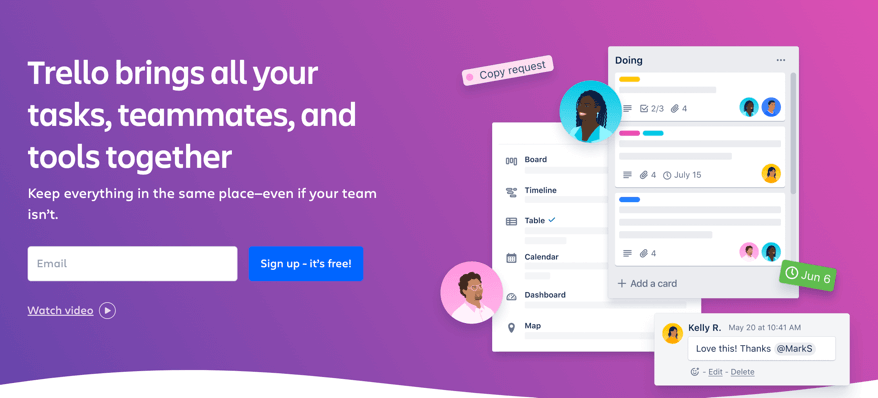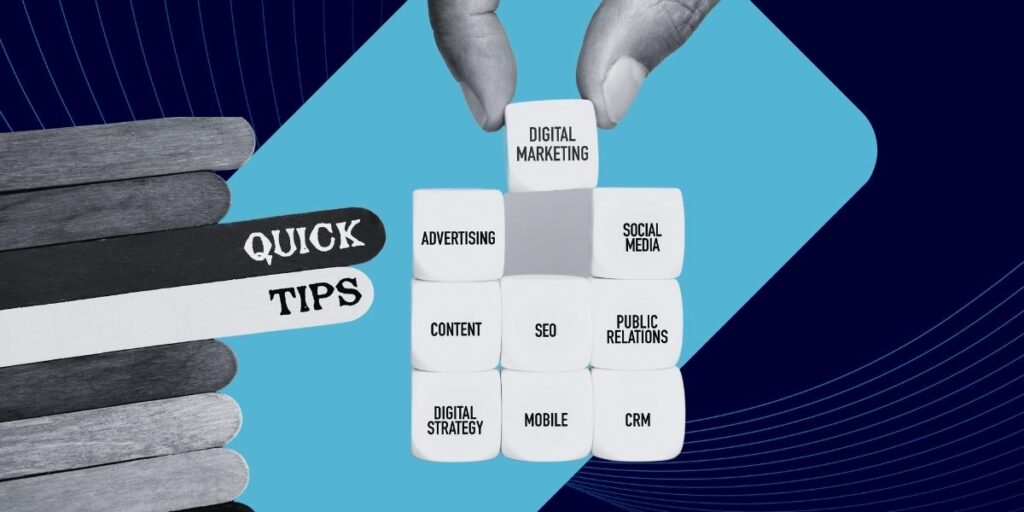Digital marketing success is a culmination of different metrics that make up a wholesome consumer and business scalability experience.
Fortunately, or unfortunately, technology has advanced to a whole new level where competition is fierce in the online stratosphere.
Whatever metrics, goals, and conversion strategies qualified as ‘digital marketing success’ a couple of years ago, are deemed as bare minimum these days. Clients expect an out-of-the-box approach from any digital marketing services company that’s looking to expand the business over a proposed timeline.
We, at ‘Marketing Hawks’ wanted to double down on different aspects of digital marketing success to give you a clear overview of the current state of affairs these days.
Here’s to help you understand how digital marketing works to optimize process efficiency and business scalability goals in 2023.
Read on…
Which Factors Qualify as Digital Marketing Success For Businesses In 2023?
Digital marketing success is more of a nuanced approach these days.
There’s no universal solution – yet digital marketing agencies that run campaigns for their clients, use different metrics and define KPIs to achieve targets.
To that end, just to show you how the element of “success” pans out these days, consider the following statistics.
The point is that these are not anomalies or exaggerated numbers. Several companies integrated different approaches to understanding their clients’ mindsets, pain points, and needs to hit the mark.
- Pay-Per-Click (PPC) advertising promises a 200% return on investment (ROI), delivering $2 for every $1 spent.
- Google and Facebook ads reportedly offer the highest ROI among paid ad channels.
There are over 49% of businesses out there, ranging from startups to mid-sized digital marketing agencies that attribute their success, and their clients’ success to organic search results.
- Email marketing demonstrates an impressive ROI of $36 for every $1 invested.
- Small businesses attribute email marketing as their most profitable marketing channel in terms of ROI.
- Lead generation stands as the primary success metric for over 20% of businesses assessing their marketing channels.
- In 2021, digital advertising expenditure reached $436 billion, surpassing offline advertising at $196 billion, signifying that 55% of advertising is digital.
As for the demand curve for digital marketing in 2023, projections from the Bureau of Labor Statistics indicate a 10% growth in marketing job opportunities by 2026.
That’s a steady growth curve looking to exceed the average across all professions.
Digital Marketing Is Still Relevant and In Demand | Here’s Why
According to the Bureau of Labor Statistics, marketing job demand is set to increase by 10% by 2026—above the average for all careers.
Customer marketing managers and search marketing managers are both on CNBC’s list of the 10 fastest-growing jobs in the US in 2022.
As we mentioned earlier, it is super-important to recognize that the scope of successful digital marketing extends beyond these focal points.
In reality, numerous aspects of a business can be elevated through any number of digital marketing practices, as long as they are calculated, accounted for, and properly implemented. The same way as your digital activities should be customized to align with your unique requirements and accessible resources, so should your definition of success be tailored to your organization.
YouTube Video: 5 Explosive Digital Marketing Strategies for 2023 (BIG Changes Ahead!)
But here’s the million-dollar question: exactly how much of it is “digital” in any ongoing digital marketing campaign?
In a digital marketing campaign, the core focus is on leveraging digital channels and technologies to reach and engage with the target audience.
Doing so includes online platforms such as websites, search engines, social media, email, mobile apps, and various digital advertising networks.
The majority of the campaign’s activities and strategies are executed through these digital channels.
The digital components in a digital marketing campaign can be quite extensive, encompassing:
- Online Advertising: This involves running digital ad campaigns on platforms like Google Ads, Facebook Ads, Instagram Ads, display networks, and other programmatic advertising platforms.
- Search Engine Optimization (SEO): Optimizing websites and content to improve visibility in search engine results pages (SERPs) and drive organic traffic.
- Social Media Marketing: Engaging and interacting with the target audience on various social media platforms, creating and sharing content, running targeted ads, and building brand awareness.
- Content Marketing: Creating and distributing valuable, informative, and engaging content through digital channels such as blogs, videos, infographics, and podcasts.
- Email Marketing: Building and nurturing relationships with leads and customers through targeted email campaigns, newsletters, personalized offers, and automation.
- Influencer Marketing: Collaborating with influential individuals on digital platforms to promote products or services to their audience.
- Data Analytics and Tracking: Utilizing digital tools and analytics platforms to measure and analyze campaign performance, audience behavior, conversions, and other key metrics.
While digital marketing campaigns predominantly utilize digital channels, it is worth noting that some traditional marketing elements might still be integrated.
For instance, an integrated campaign might include elements such as offline advertising, print collateral, or physical events to complement digital efforts.
However, the digital components tend to be the primary drivers of reach, engagement, and measurable results in a digital marketing campaign.
So, You Want To be a Digital Marketing Services Provider | Here Are the KPIs and Metrics To Implement For Businesses
Although digital marketing services promise a roof-tearing return on investment, a couple of things matter a lot to outline the façade of ‘digital marketing success.’
First and foremost: change doesn’t happen overnight. Success requires a positive middle attitude with consistency and hard work to show up not only for your agency but for any other prospect out there.
But enough of the motivational stuff. You already know about it, and there’s plenty to find in different growth mindset books.
Here are the brass tacks that matter in terms of KPIs and metrics for a self-starter business like yours.
1. Conversion Rate:
The conversion rate measures the percentage of website visitors who take a desired action, such as making a purchase, filling out a form, or subscribing to a newsletter.
It helps to gauge the effectiveness of your website and landing pages in driving desired outcomes. The KPIs associated with conversion rate include:
- Goal Completions: Tracking the number of completed actions or conversions on your website.
- Click-through Rate (CTR): Evaluating the rate at which users click on a specific call-to-action or ad.
2. Return on Investment (ROI):
ROI quantifies the profitability of your digital marketing efforts by comparing the revenue generated against the cost incurred.
As a result, it enables you to determine the efficiency and profitability of your campaigns. The KPIs linked to ROI encompass:
- Cost per Acquisition (CPA): Calculating the average cost to acquire a new customer.
- Customer Lifetime Value (CLTV): Estimating the long-term value of a customer and assessing the revenue they generate over their entire relationship with your business.
3. Website Traffic:
Monitoring the volume and quality of traffic to your website is vital for assessing your online presence. It helps identify areas of improvement and the success of your marketing initiatives. The KPIs associated with website traffic include:
- Unique Visitors: Tracking the number of individual users who visit your website.
- Bounce Rate: Analyzing the percentage of visitors who leave your website after viewing only one page.
4. Social Media Engagement:
Evaluating the level of engagement and interaction on your social media platforms is crucial for understanding audience response and the effectiveness of your content.
The KPIs related to social media engagement comprise the following aspects. Depending on your situation and the client’s requirements, treat every social media campaign on a case-to-case basis.
And feel free to improvise for the best results:
- Likes, Comments, and Shares: Measuring the volume of interactions on your social media posts.
- Reach and Impressions: Assessing the number of users who see your social media content.
5. Email Marketing Performance:
Email marketing remains a powerful tool for nurturing customer relationships. Tracking its effectiveness helps optimize campaigns and improve engagement.
The KPIs associated with email marketing include:
- Open Rate: Measuring the percentage of recipients who open your emails.
- Click-through Rate (CTR): Evaluating the rate at which recipients click on links within your emails.
Search Engine Optimization (SEO) Performance:
Putting down everything there is to search engine optimization – and that too from a digital marketing success point of view will derail us off-topic.
To that end, we feel that explaining SEO elaborately warrants its own long-form blog post where we can do a deep dive into the key aspects of this particular strategy.
For now, just to give you a gist of the KPIs concerning SEO, here’s what you need to keep in mind:
- Keyword Rankings: Tracking the positions of your targeted keywords in search engine results.
- Organic Traffic: Assessing the volume of visitors who find your website through organic search.
15 Best Tools To Guarantee a Digital Marketer’s Success
The following digital marketing tools are essential to a marketer’s arsenal these days.
Of course, you can do stuff manually, but these tools will not only optimize your process efficiency, but they’ll also help get things done super-fast.
Also Read: The GTD (*Getting Things Done) Approach To Running a Digital Marketing Agency
1. Google Analytics (Free)
This web analytics tool is highly robust and provides valuable insights into various aspects of your website, including detailed information on website traffic, user behavior, conversions, and more. It helps you understand how visitors interact with your site, enabling you to make data-driven decisions for optimization and improvement.
2. Semrush (Paid)
As an all-in-one digital marketing suite, Semrush offers a wide range of features to support your digital marketing efforts. It includes comprehensive tools for keyword research, competitor analysis, SEO auditing, and social media management. With Semrush, you can gain valuable insights into your competitors’ strategies and discover opportunities to enhance your online presence.
3. Hootsuite (Paid)
Designed as a social media management platform, Hootsuite enables you to efficiently schedule, monitor, and analyze your social media posts across multiple platforms. It provides a centralized dashboard where you can manage and streamline your social media activities, allowing for better engagement, audience interaction, and performance tracking.
4. Buffer (Paid/Free)

Buffer is another popular social media management tool that offers both paid and free plans. It allows you to schedule and analyze your social media posts, ensuring consistent and timely content delivery. With its intuitive interface, Buffer simplifies the process of managing multiple social media accounts and provides insights to help optimize your social media strategy.
5. Moz (Paid/Free)
Moz is a comprehensive SEO toolset that caters to various aspects of search engine optimization. It provides tools for keyword research, link analysis, on-page optimization, and site audits. Moz’s suite of tools helps you improve your website’s visibility, analyze backlinks, optimize content, and identify areas for optimization to achieve better search engine rankings.
6. Ahrefs (Paid)
Ahrefs is a powerful SEO toolset focused on backlink analysis, keyword research, competitor research, and rank tracking. It offers a comprehensive suite of tools to help you understand your backlink profile, identify high-ranking keywords, analyze competitor strategies, and monitor your search engine rankings. Ahrefs provides valuable insights to optimize your SEO efforts and improve your organic search visibility.
7. Mailchimp (Paid/Free)
Mailchimp is a widely-used email marketing platform that offers both paid and free plans. It provides features like email automation, segmentation, A/B testing, and analytics. With Mailchimp, you can create and send targeted email campaigns, nurture customer relationships, and track the performance of your email marketing efforts.
8. Canva (Paid/Free)
Canva is a user-friendly graphic design tool that enables you to create visually appealing social media posts, infographics, presentations, and more. It offers a wide range of templates, fonts, graphics, and customization options, allowing even non-designers to create professional-looking visual content for their digital marketing campaigns.
9. Trello (Paid/Free)

Trello is a versatile project management tool that uses boards and cards to help teams organize and track tasks, deadlines, and workflows. It provides a visual interface that allows you to create and manage projects, assign tasks, set priorities, and collaborate with team members. Trello enhances productivity and facilitates effective project management for digital marketing campaigns.
10. Google Ads (Paid)
Google Ads is a widely-used platform for running paid advertising campaigns across Google’s search network, display network, YouTube, and other partner sites. It enables you to create targeted ads, choose specific keywords, set budgets, and track campaign performance. Google Ads helps you reach your target audience effectively and drive relevant traffic to your website or landing pages.
11. Facebook Ads Manager (Paid)
Facebook Ads Manager is Facebook’s advertising platform that allows you to create and manage targeted ad campaigns on Facebook and Instagram. It provides a wide range of ad formats, targeting options, and budget control features. With Facebook Ads Manager, you can reach your desired audience, increase brand visibility, and drive conversions through engaging and tailored advertisements.
12. Hotjar (Paid)
Hotjar is a user behavior analytics tool that offers features such as heatmaps, session recordings, and feedback polls. It helps you understand how users interact with your website, identify areas of improvement, and optimize the user experience. Hotjar’s insights allow you to make data-backed decisions to enhance website usability, increase conversions, and improve overall customer satisfaction.
13. Google Keyword Planner (Free)
Google Keyword Planner is a tool within Google Ads that assists in identifying relevant keywords for your campaigns. It provides data on search volume, competition, and keyword suggestions, helping you refine your keyword targeting strategy and optimize your content for better search engine visibility.
14. Yoast SEO (Paid/Free)
Yoast SEO is a popular WordPress plugin that focuses on on-page SEO optimization. It offers features such as content analysis, XML sitemap creation, meta-tag optimization, and readability checks. Yoast SEO helps you optimize your website’s content structure, improve keyword targeting, and ensure your pages adhere to best practices for search engine optimization.
15. Google Search Console (Free)
Google Search Console is a free tool that helps monitor and optimize your website’s performance in Google search results. It provides insights into indexing status, crawl errors, search analytics, and more. With Google Search Console, you can identify and fix technical issues, monitor keyword rankings, and optimize your website to enhance its visibility in Google searches.
Over To You:
And there you have it – a detailed insight into everything there is to know about digital marketing success and the different things that make up for a wholesome experience.
Should you have any questions, feel free to let us know in the comments section below.
Good luck!





